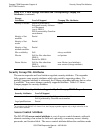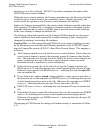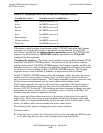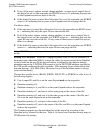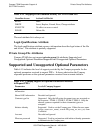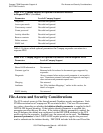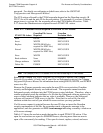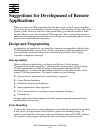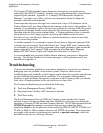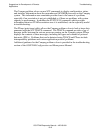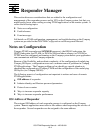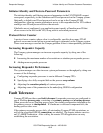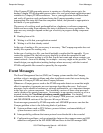
OSI/FTAM Responder Manual—425199-001
5-1
5
Suggestions for Development of Remote
Applications
When you write an FTAM application that uses the services of the Compaq responder,
how you design, code, and debug it depends largely on the interface you are using on the
remote system. However, there are some general things you should consider to make
the most effective use of the Compaq FTAM responder. This section briefly discusses
application development considerations for the design and programming phases of your
project and for the troubleshooting phase.
Design and Programming
In designing your application, you should first consider interoperability with the other
FTAM implementation you are using. In the coding phase, build error handling into
your application, taking advantage of the information provided by the Compaq
responder in diagnostic messages.
Interoperability
Before writing your application, you should read Section 2 of this manual,
“Conformance and Interoperability,” which describes certain aspects of the Compaq
FTAM responder that can affect its ability to interoperate with other FTAM
implementations. Compare the information in Section 2 to the characteristics of the
remote FTAM implementation. Pay special attention to the following:
•
Service classes, functional units, and attributes supported
•
Future-filesize limitations
•
Maximum-string-length limitations
•
String-significance values supported
•
Use of format effectors, including carriage return/line feed pairs
•
Character sets
Existing applications being adapted to use the Compaq responder might need some
modifications in these areas.
Error Handling
To ensure that you receive as much information as possible about application problems
if they occur, your applications should follow a good error-handling strategy. In
general, you should check for status and error information after each FTAM operation
you request in your program, and then provide some means of reporting errors.



